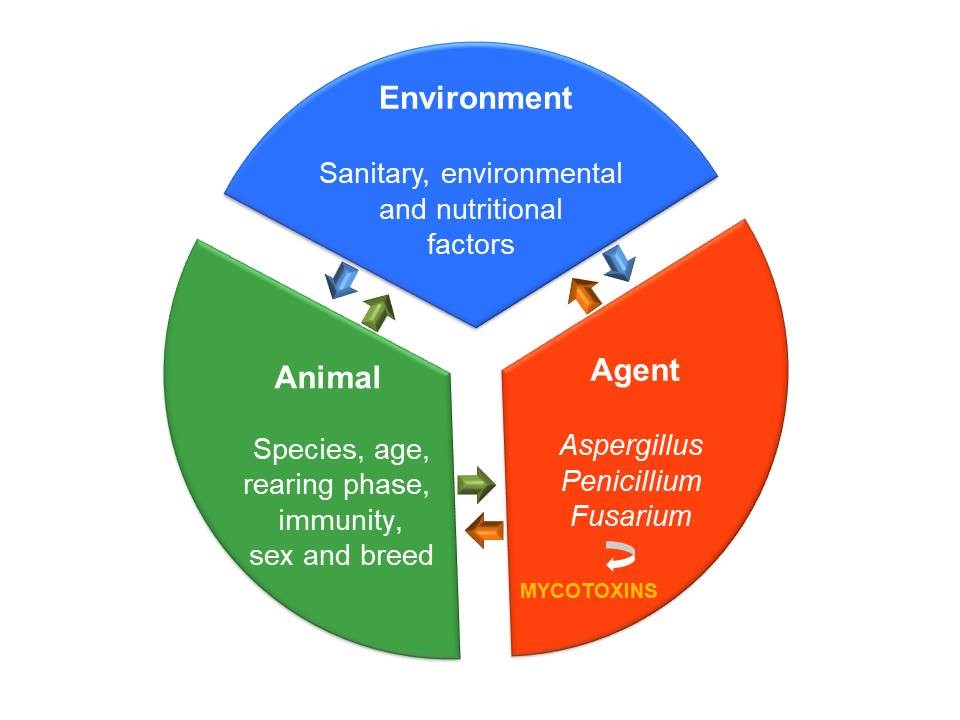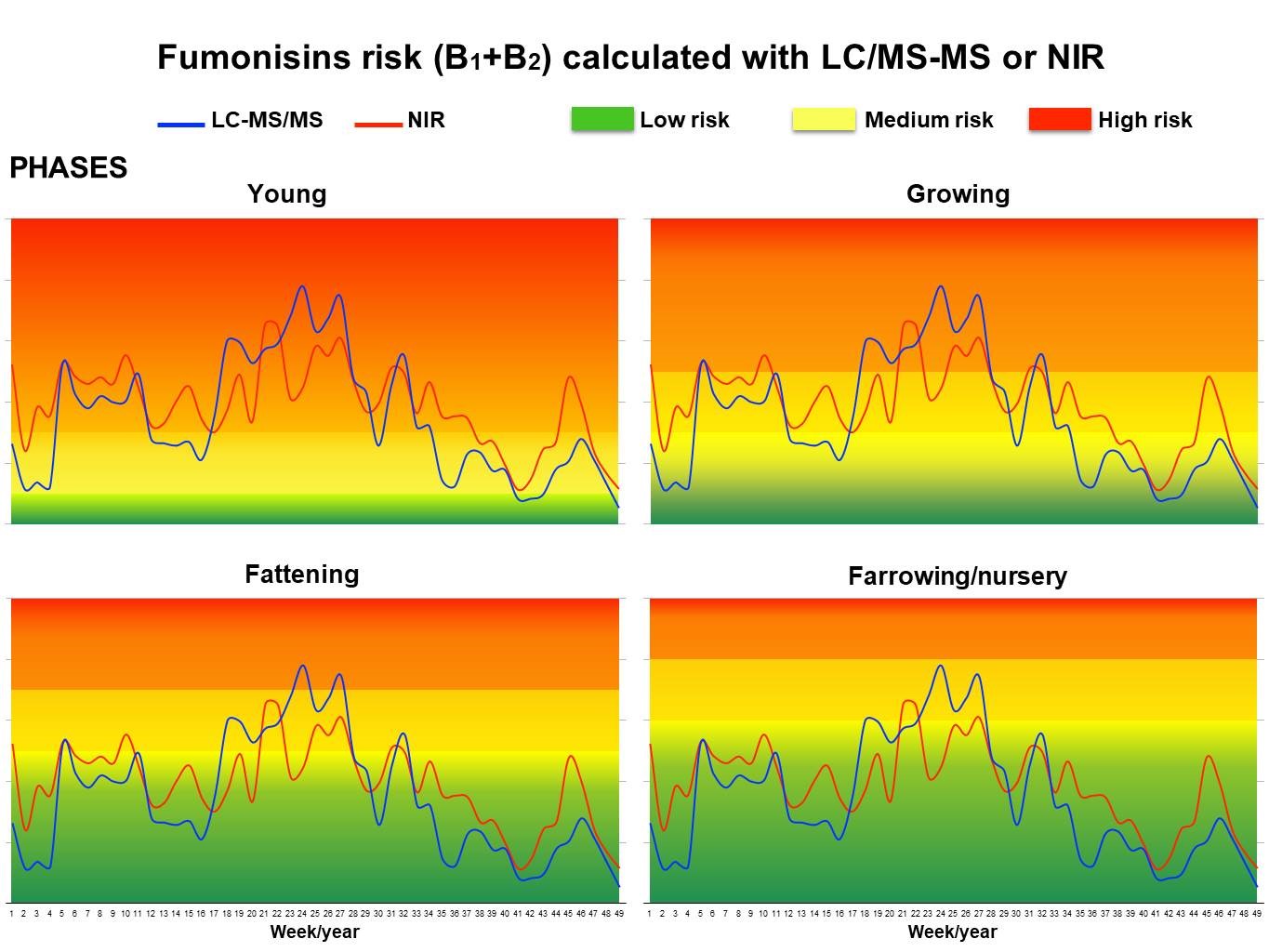Susceptibility and magnitude of the toxic effects vary according to some intrinsic and extrinsic factors:

Such factors contribute to the formation of the Mycotoxins Risk. Its calculus is based on an algorithm which considers the measured mycotoxicological contamination and prevalence from a history of analyses, animal species, production phase, age, health, ambience and nutritional aspects. These variables as well as their associations may differently affect the zootechnical and sanitary features. Moreover, two basic premises must be considered: the dose and the length of exposure to the toxin.
The figure below demonstrates the real application of the risk for fumonisins in a swine-producing Company. It may be seen that the reference and the ultra-rapid methodologies present the same pattern. It is thus proven that NIR is valid as a managing tool with an assortment of advantages, especially the interpretation of the Mycotoxins Risk in real time.

Assessment of the Mycotoxins Risk must be dynamic and interpreted according to the history of contamination, on which decision-making is based. By means of a simple and easily-visualized way, the time to act is indicated so that the impact on the productive system is minimized.
Learn more:





